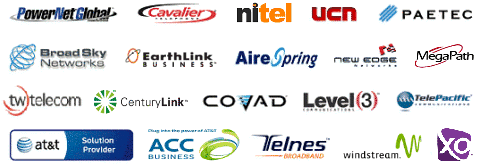Picking the Best Carrier Agnostic Broker
If you have been searching for the finest carrier to provide a new 10 Mb connection to the Internet for your firm, I advise that you make contact with an freelance consultant who can deal with all of the carriers in your vicinity. With substantial reorganization in the direct sales offices of the carriers, you may not be able to find the same people you worked with before. Nonetheless, once you locate an freelance consultant willing to help, you could channel all of your telecom needs to just one broker instead of using up time trying to contact the sales agent at each and every telecom provider. If you are fortunate enough to locate a specific salesperson who has the skills you demand, with the technical support that you require, you will be on the right track. But you will be extremely lucky to find the same quality of person when you contact all the other carries such as Qwest, AT&T, Level 3, Paetec, Integra, XO, C-Beyond, Sprint and any other carrier you've formerly done business with. Do yourself a favor and make just one call to a carrier agnostic high-speed internet broker.
The benefits of working with a carrier agnostic agency in Oakland are remarkable. On account of the many carrier affiliations that these groups posses they can do each of the pricing quotations for you -- no matter if it is for a 20 site MPLS WAN, a 10 Mb Ethernet connection, or a new workplace with six phone lines and a DSL -- they will do the investigation and provide you with the finest options obtainable. When you have made the choice on which carrier best meets your requirements, the representative will then carry out the order for you and manage the process until your services are set up. They will never invoice you for their assistance, but are compensated by the carriers for helping you. Rather than paying a commission to an in-house agent, the carriers will reimburse the independent agent helping you.
A telecom broker gives businesses in Oakland with unbiased, vendor-agnostic consultants to help make recommendations on Metro Ethernet requirements and network structure. Once the customer's network requirements are fully determined up front, it is then put out to bid with the available on a competing basis. By doing this the buyer gets the optimal bargain.
We connect you with Oakland T-1 Line. This page is a short listing of the services specifically offered by T1Market in Oakland.
Going forward, our wish is to regularly improve our product offerings. We now provide enterprise products usually utilized by larger corporations, particularly: gigabit ethernet, MPLS network service, OC3, and cloud computing bandwidth delivered over a fiber optic backbone. Many of our providers also deliver cost-free managed Cisco routers for multi-year contracts. Mainly, our goal is to create a bond with you - our client - that will definitely last for years to come. Acquiring your trust is exactly what we do here. Conserving you cash on affordable Ethernet services is how we keep it.


